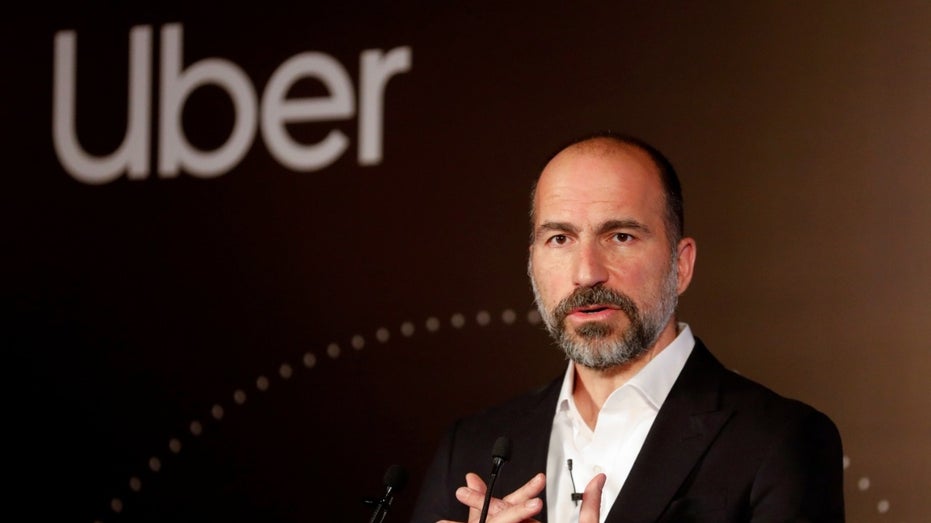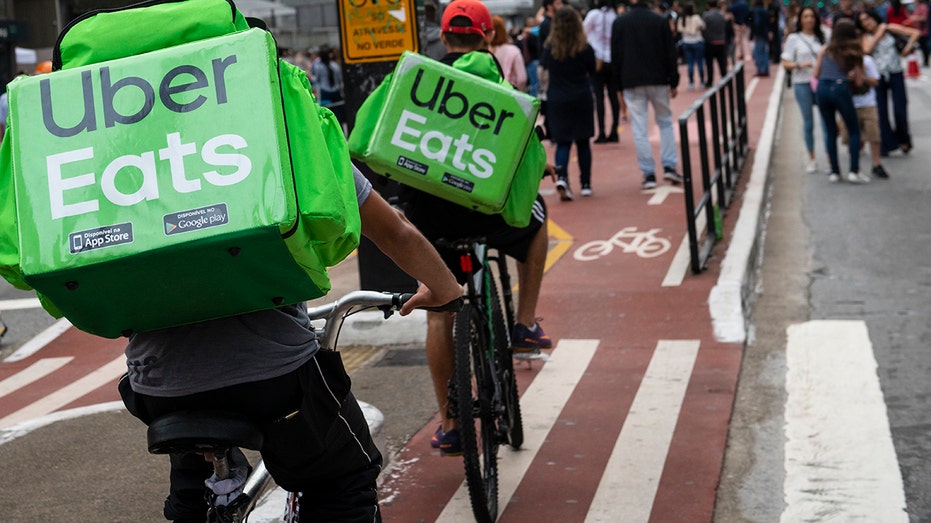Uber might need to stow its freight train
As most tech companies ramp down other risks, Uber has been quietly ramping up freight
Uber a growth stock trading like a value stock: Tony Zabiegala
Strategic Wealth Partners COO Tony Zabiegala assesses the tech sector and explains how inflation could help propel Uber on 'The Claman Countdown.'
Uber Technologies has amassed a nearly $7 billion business in a different kind of transportation that investors never talk about but should at least be thinking about.
Uber Freight functions much like Uber Rides or Uber Eats in digitally connecting available carriers with shipments. Carriers get upfront pricing, and shippers can track shipments from pickup to delivery.
Chief Executive Officer Dara Khosrowshahi would really like you to love the value proposition of such an ancillary business as much as he does. Last May, as investors started turning their sights to profit over growth, he was one of the first major tech execs to publicly wax poetic about the "seismic shift" in the market and his corporate responsibility to be leaner and more thoughtful.

Uber CEO Dara Khosrowshahi speaks to the media at an event in New Delhi, India, October 22, 2019. Recently he's said that freight needs to grow to appeal to investors. (Reuters/Anushree Fadnavis / Reuters)
"We have to make sure our unit economics work before we go big," he said in a letter to his employees last year — the same letter in which he said "freight needs to get even bigger so investors recognize its value and love it as much as I do."
NYC TAXI UNION STRIKES AT LAGUARDIA; UBER SAYS RIDES OUT OF AIRPORT INCREASED
Freight’s economics are only just starting to work. For a company that did over $115 billion in gross bookings last year across all its business segments, Uber’s freight business has seen relatively small organic growth.
Uber Technologies Inc
| Ticker | Security | Last | Change | Change % |
|---|---|---|---|---|
| UBER | UBER TECHNOLOGIES INC. | 83.09 | -1.17 | -1.39% |
Launched in 2017, freight was only doing $400 million in quarterly gross bookings for Uber just before its $2.25 billion acquisition of managed transportation company Transplace in late 2021. Even with Transplace — a company that has been around for over two decades — freight only managed to break even last year on the basis of adjusted earnings before interest, taxes, depreciation and amortization.

Two young men working for Uber Eats. Uber is primarily known for it's ride sharing and food delivery apps.
Future growth will likely be more costly. Uber now calls itself "the largest logistics cloud ever built," but it is still a middling player in the grand scheme of the traditional freight industry dominated by a handful of larger companies, led by more than a century-old C.H. Robinson.
Now is also a challenging time for freight generally. Per Uber Freight’s most recently published industry report last year, real spending on durable and nondurable goods was trending down, manufacturing was decelerating, and service levels and truck utilization forecasts were weaker than the prior outlook from FTR Transportation Intelligence. As Uber’s chief financial officer, Nelson Chai, said on a February earnings call, "the overwhelming cycle" in freight right now means its business "will continue to lag likely vs. where we would have hoped."
NEW YORK CITY FOOD POLICY OFFICE SAYS UBER, LYFT MUST HAVE ‘ZERO-EMISSION FLEET’ BY 2030
As a highly fragmented industry that still generally functions via phone or fax, freight represents a conceptually attractive business to digitize. With 70% of everything sold moved on a truck, freight has a massive market opportunity going for it. Worldwide, Uber calls freight a $4 trillion market — nearly $1 trillion in the U.S. Then again, Mr. Khosrowshahi himself also wrote last year that "market size is irrelevant if it doesn’t translate into profit."
That may lead to a Catch-22 for a company that needs to show investors size in order to get them to pay attention, but can’t yet afford to sacrifice growing profits in its other businesses in order to get there.

UberX Share is available in cities across the U.S. Uber is primarily known for it's ride sharing and food delivery apps. (Uber)
What has made Uber an attractive public company more recently has been the financial synergies it has demonstrated between Eats and Rides. As Gordon Haskett’s Bobby Mollins put it, "Freight benefits from the Uber name; freight doesn’t benefit Uber."
Consider that with Eats and Rides, Uber is leveraging the same drivers and consumers to make its platform all the more attractive versus competitors across both food delivery and ride-share. For drivers, cross-platform opportunities lead to better earnings and higher retention, the company shows. On the consumer side, Uber has said Uber One members spend 2.7 times more across Uber than nonmembers.
GET FOX BUSINESS ON THE GO BY CLICKING HERE
With both different drivers and customers in freight, the same types of synergies don’t exist. One potential benefit may come from large freight customers becoming Uber customers in other ways. Uber freight, for example, says it serves nine out of the top 10 consumer-packaged-goods companies. These relationships could conceivably be leveraged into advertising revenue on the Uber Eats platform and other delivery partnerships—though thus far, Uber has had little to report here.
Big risks and rewards of freight are probably both in limbo until Uber decides to meaningfully invest behind it. But investors should be prepared to either back up the truck or park it when that day comes.




















